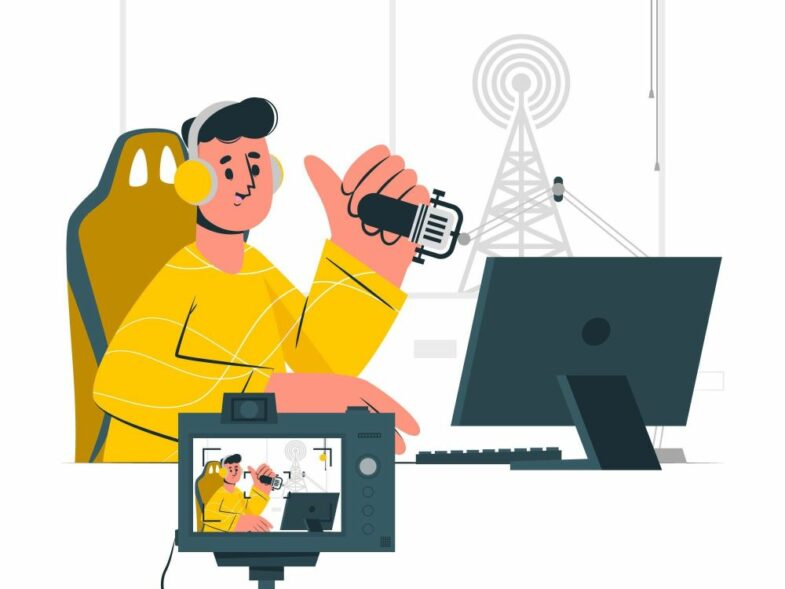Understanding the Role of Graphic Design in Medical Education
Graphic design plays a crucial role in online learning, especially for medical students who rely heavily on visual content to grasp complex concepts. In a field where precision and clarity are paramount, well-designed visuals can make the difference between understanding a topic and struggling with it. From anatomy illustrations to interactive case studies, effective design enhances comprehension and retention.
In my experience as a student, I once struggled to memorize the human circulatory system until I found an interactive, well-designed infographic that simplified the process. Instead of reading lengthy paragraphs, I could visually trace blood flow, making learning intuitive and engaging. This highlights how design transforms education from overwhelming to accessible.
The Power of Visual Hierarchy in Learning Materials
A good learning platform doesn’t just throw information at users—it organizes it. Graphic design principles such as contrast, alignment, and proximity help structure content in a way that guides learners naturally. For example, using larger fonts for key concepts, color-coded diagrams, and clear navigation elements keeps students focused and prevents cognitive overload.
Graphic design is not just about aesthetics; it’s about creating an intuitive experience. A cluttered interface filled with unorganized content can frustrate students, while a clean, well-structured design enhances learning efficiency. Medical students, often working under tight schedules, benefit immensely from well-thought-out visuals that highlight crucial information without unnecessary distractions.
Enhancing Retention Through Interactive Elements
Static text can only do so much. Interactive elements such as clickable diagrams, drag-and-drop activities, and animated explanations bring complex medical topics to life. Take 3D modeling in anatomy courses, for example—being able to rotate a model of the human brain helps learners understand spatial relationships better than a flat image ever could.
This engagement isn’t just about making things look fancy. Studies show that interactive learning boosts retention rates significantly compared to passive reading. When learners actively participate, whether through quizzes or simulations, their ability to recall information improves dramatically.
The Role of Color Theory in Medical Learning Interfaces
Color choice isn’t arbitrary—it affects how information is processed. For instance, red is often used in medical design to indicate urgency, while blue conveys trust and stability. Medical e-learning platforms often use these principles to differentiate between normal and abnormal physiological states, ensuring clarity at a glance.
I once used an app where pathology images were color-coded—healthy tissues were displayed in cool colors, while affected areas appeared in warm tones. This small but strategic design choice made it easier to quickly assess conditions and understand key differences.
Typography and Readability in Educational Content
Typography may seem minor, but it greatly impacts comprehension. Dense, small text can deter students from reading, while legible fonts with proper spacing improve readability. Sans-serif fonts, for instance, are commonly used in digital content because they reduce eye strain.
Consider a medical textbook with cluttered text blocks versus a digital version with clear headers, bullet points, and ample white space. Which one would you prefer? Good graphic design ensures that information is digestible, making learning more effective and less stressful.
Accessibility and Inclusive Design for All Learners
Not all students learn the same way. Some have visual impairments, dyslexia, or other learning challenges that require adaptive design solutions. Incorporating features like adjustable text size, high-contrast visuals, and text-to-speech compatibility ensures inclusivity.
An accessible design approach benefits everyone, not just those with disabilities. For example, captions on medical videos help students learn in noisy environments, and simplified icons assist in quick navigation. User-friendly interfaces make learning effortless for a broader audience.
Conclusion: Why Graphic Design Matters in Medical Education
Medical students face an overwhelming amount of information daily. Well-implemented graphic design simplifies this burden by enhancing comprehension, improving retention, and making learning engaging. A well-structured digital learning environment removes unnecessary distractions and allows students to focus on what truly matters—understanding medical concepts efficiently.
From interactive visuals to strategic typography, every element plays a part in shaping a seamless learning experience. As online education continues to evolve, prioritizing user-friendly design will be essential in equipping future medical professionals with the knowledge they need to succeed.









